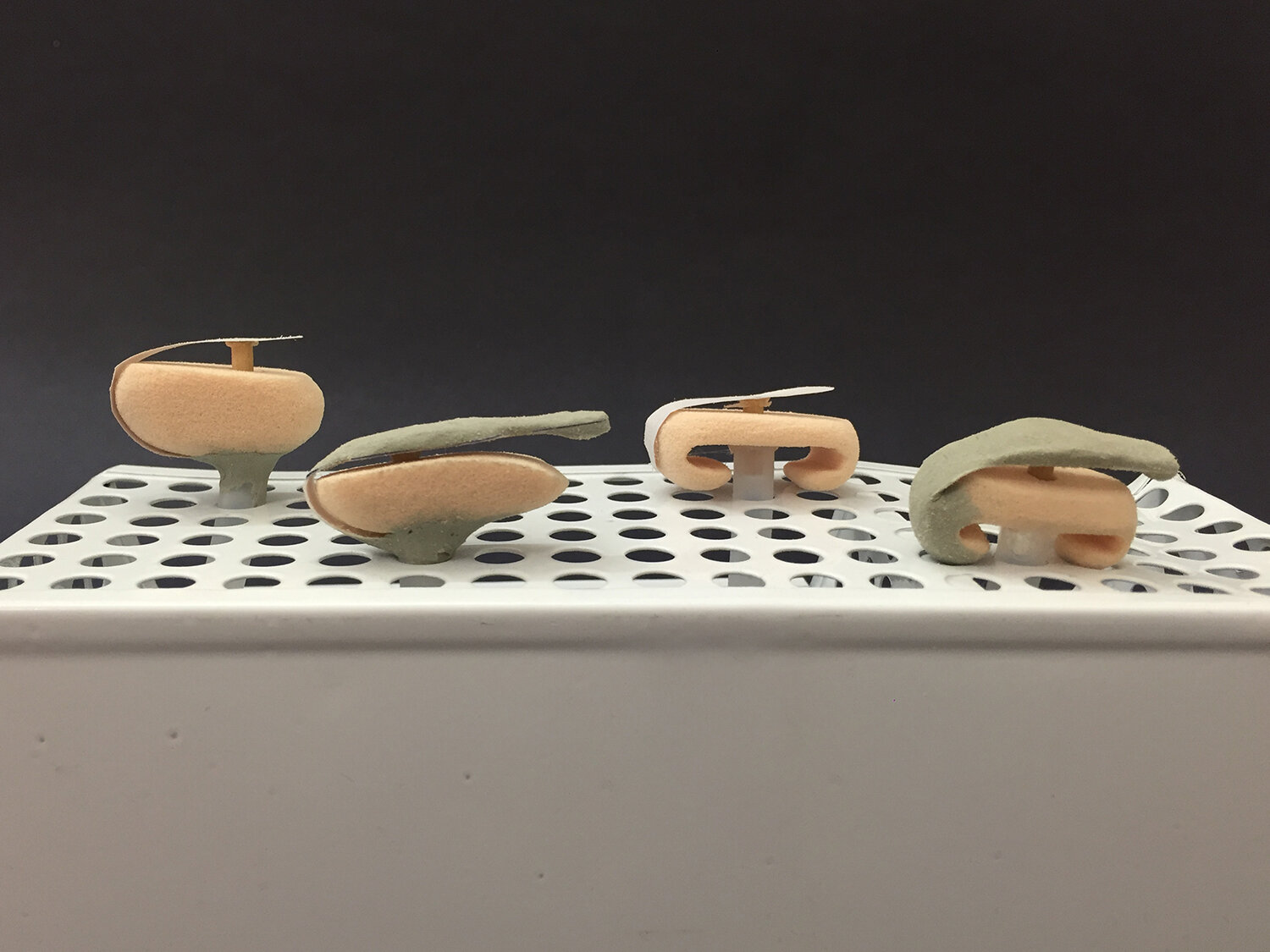Tubon
A low-profile enteral feeding tube designed to make it feel less of a medical device and more like an accessory.
Roles
User Research
Sketching
Prototyping
Tools
Illustrator, InDesign, Photoshop
SolidWorks
3D Printing in Resin
Mentor
Jeff Kapec
Intro
Enteral nutrition, also called tube feeding, is a method used to provide the daily intake of nutrients directly to the gastrointestinal (GI) tract. Temporary tubes, such as nasogastric tubes, are placed through the nose, pass by the esophagus, and deliver food to the stomach. A more permanent solution are Percutaneous Endoscopic Gastrostomy (PEG) tubes, which are placed through the abdominal wall.
How can patients with PEG buttons be relieved of their discomfort surrounding the issues around their tubes?
PEG tubes are used by patients that have digestive problems caused by a high-risk disease or birth defects. These tubes allows them to keep living. After a few months, some patients opt to use low-profile tubes, called buttons, that provide a more comfortable and concealed solution, but still have many issues.
Discover/Problem Definition
Standard feeding tubes and buttons have a balloon as a retaining mechanism, which can deflate or rupture.
Clogged Tube
Feeding tubes get clogged constantly. Proper maintenance and flushing is important.
Tugging & Pulling
Physically active patients accidentally pull their tubes and buttons out, especially while sleeping.
Balloon Rupture
Retention balloon breaks and must be replaced immediately to avoid stoma closure.
Stoma Leakage
Stomach contents may leak through the stoma regardless of tube placement.
Material Decay
Stomach contents corrode silicone, so tubes must be changed every 1 to 6 months.
Develop
Exploring different retention mechanisms that can offer more comfort and durability.



Prototype
I chose an anchor retention mechanism that has been used by Entristar as endoscopic "mushroom cage" gastrostomy tubes in patients with ALS that require enteral nutrition.
Design
Promoting calm and trust is my primary concern when designing digital and physical medical products. I implemented this by making the external side of the button feel more seamless with the body.
Conclusion
Quantity Over Quality
When prototyping and exploring ideas, creating as many as possible is a good strategy. Any idea is valid, as long as they’re being created. Through this quantity process is where we can find an appropriate solution.
Production Limitations
Sometimes there are limits to what can be recreated for a final prototype. In this case, 3D printing the button in a very flexible silicone-like material was not feasible.
Break Down to Build Up
Dividing the design into multiple parts and developing them separately allows for better refining of each one. Then the parts can come together to build a better final design.

















